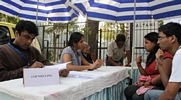|
|
 Acne (1,500) Acne (1,500)
 Addictions (1,500) Addictions (1,500)
 Advice (1,500) Advice (1,500)
 Allergies (1,092) Allergies (1,092)
 Alternative Medicine (1,500) Alternative Medicine (1,500)
 Anti Aging (1,500) Anti Aging (1,500)
 Breakup (1,500) Breakup (1,500)
 Cancer (1,499) Cancer (1,499)
 Dental Care (1,500) Dental Care (1,500)
 Disabilities (1,500) Disabilities (1,500)
 Divorce (1,500) Divorce (1,500)
 Elderly Care (1,498) Elderly Care (1,498)
 Goal Setting (1,500) Goal Setting (1,500)
 Hair Loss (1,500) Hair Loss (1,500)
 Health and Safety (1,497) Health and Safety (1,497)
 Hearing (1,500) Hearing (1,500)
 Law of Attraction (1,499) Law of Attraction (1,499)
 Marriage (1,500) Marriage (1,500)
 Medicine (1,497) Medicine (1,497)
 Meditation (1,499) Meditation (1,499)
 Men's Health (1,500) Men's Health (1,500)
 Mental Health (1,500) Mental Health (1,500)
 Motivational (1,500) Motivational (1,500)
 Nutrition (1,495) Nutrition (1,495)
 Personal Injury (1,499) Personal Injury (1,499)
 Plastic Surgeries (1,500) Plastic Surgeries (1,500)
 Pregnancy (1,496) Pregnancy (1,496)
 Psychology (1,500) Psychology (1,500)
 Public Speaking (1,500) Public Speaking (1,500)
 Quit Smoking (1,500) Quit Smoking (1,500)
 Religion (1,499) Religion (1,499)
 Self Help (1,500) Self Help (1,500)
 Skin Care (1,500) Skin Care (1,500)
 Sleep (1,500) Sleep (1,500)
 Stress Management (1,500) Stress Management (1,500)
 Teenagers (1,492) Teenagers (1,492)
 Time Management (1,500) Time Management (1,500)
 Weddings (1,500) Weddings (1,500)
 Wellness (1,500) Wellness (1,500)
 Women's Health (1,500) Women's Health (1,500)
 Women's Issues (1,500) Women's Issues (1,500)
|
Except for the high end establishments, just about every type of restaurant these days has some form of customer self-service buffet or salad bar serving ready-to-eat foods. Even El Pollo Loco and other Mexican style restaurants allow you to pick and fill up from a choice of salsas. Asian style all-you-can-eat restaurants are another big one with many popping up in most big cities. Then there are of course the restaurants that focus entirely on buffets and salad bars.
The health and safety laws governing these displays have developed over the years to address the uniqueness of this type of set up and some of the unique hazards or risks to consumers. Noted below are most of those requirements as well as my own recommendations from years of experience inspecting restaurant buffets and salad bars:
--One obvious requirement is that all open exposed ready-to-eat food must be shielded so as to block a direct line between the customer's mouth and the food on display. This shield is generally known as a sneeze guard for the larger displays of food and is usually glass or transparent plastic, angled above the food enough to block possible contamination coming from a customer's mouth (saliva from sneezing, coughing, talking, etc.). The shield can also take the form of a container with a tight fitting securely attached lid, normally with hinges. If there is no evidence of a shield or lid then the display is most likely not approved and should be avoided.
--A separate utensil with a handle is required for each food displayed for self-service. No customer is allowed to touch any of the exposed food with their hands.
--There must be clean plates and other tableware at or adjacent to the buffet or salad bar and customers should be reminded, or notified if need be, that only clean tableware is to be used when returning to the buffet.
--The proper temperatures must be maintained. The food is usually displayed on ice (and actually should be buried in ice), or the containers are sitting either in a refrigerated unit or warmer, or the food is sitting under a heating lamp. Look for steam coming from the warmer or steam table and even the food itself. Do not trust a chafing dish for long term holding (more than 2 hours) of foods. You will generally only see chafing dishes at a temporary buffet setting. They are large shallow metal platters with one or two canned gas lighted flames underneath, attempting to keep the food warm. They are maybe good for short periods of time only, and are not to be trusted or definitely not approved for a more permanent buffet setting. Heat lamps usually fall into this same category. They also are not the best means of maintaining hot holding temperatures for long period of times.
--Employees should be constantly monitoring and maintaining the buffet or salad bar. They should be doing everything from replenishing it to cleaning and checking temperatures frequently.
--No sulfites or sulfiting agents. Sulfites used to be a common preserving agent especially in fruits, maintaining a fresh appearance. Most if not all states prohibit any food facility from applying sulfating agents to fresh fruits and vegetables intended for raw consumption, or to any potentially hazardous foods. Sulfites are still allowed on fruits and vegetables not sold in the raw state, such as dried fruits and grapes used for wine.
--Absolutely no flies or other types of vermin (cockroaches, rodents) can be present. Contrary to what you may have heard, there is no acceptable number or amount of vermin allowed in a food facility. Vermin are strictly illegal in all areas of the establishment. They harbor and can transmit dangerous microorganisms as well as general filth to your food and should not be tolerated.
-- No leaking and pooling waste water on the floor area, either from melting ice, or the refrigeration or warmer unit.
--Most foods should have a label identifying the common name of the food, sauce, dressing, condiments etc.
Learning the requirements and potential hazards of a buffet or salad bar is just good consumer awareness and can give you the advantage in preventing a serious food borne illness.
|
|
|



